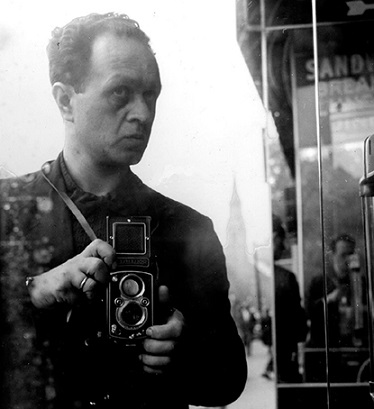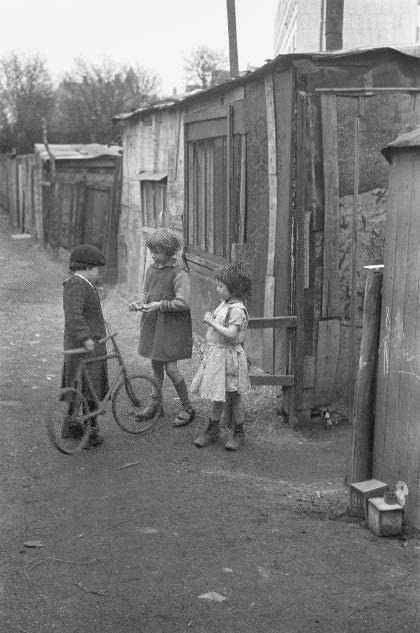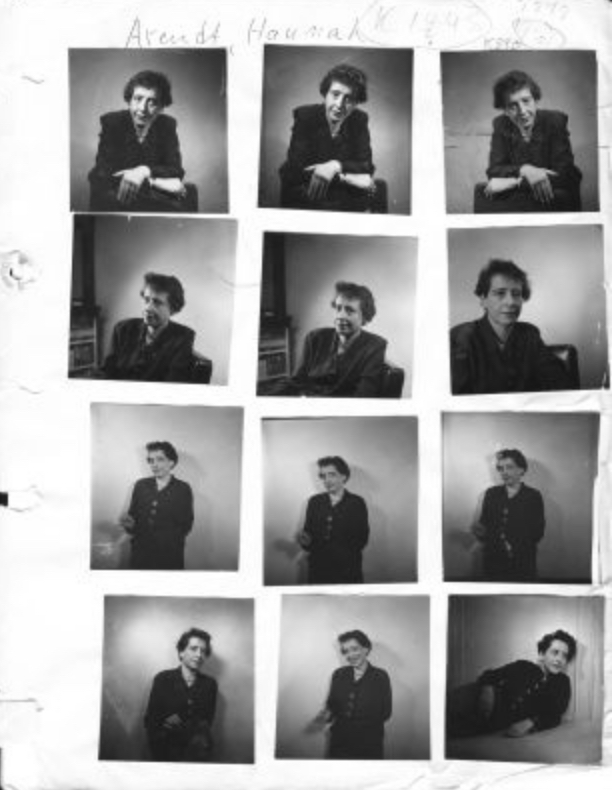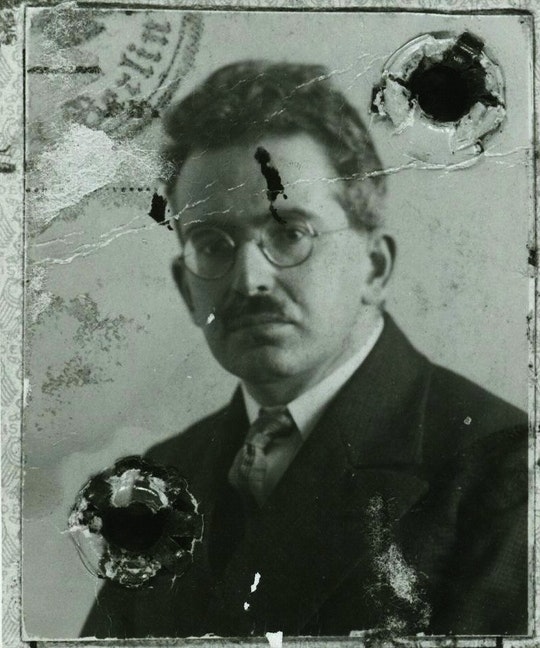Notes from the Paris Ghetto
1st note: A real civil war over the term “kosher” is taking place on the company signs of the food stores in the Saint Paul quarter. Up to now, it was believed that this word meant that food was in accordance with ritual regulations. Up to now, it was believed that what was not kosher was simply true and that the adjective “kosher” was not subject to any increase.
Now one learns that the word “kosher” is the same as the word “national” elsewhere: one party, well, it is national, the other, however, is more national, the third, it must be admitted, is most national, but my party is the most national, most national, and if you do not adhere to it, you are a national traitor. So there are similar libations at the ritual dinner in Paris. A single butcher’s store in the Rue des Ecouffes is content with the three consonants: kosher. This simple confession is doubted by the neighboring Boucherie, Charcuterie et Triperie, which blinks at the neighboring store and says of itself: “emes kosher”, I am truly kosher.
What good is that to her, her competitor across the street boasts that he supplies the “Schomre Hadas”, the guardians of the faith, so that even the most Orthodox, the most Orthodox of all, may quietly obtain his lambs and – especially since the company’s signs also indicate the sale of “Ojfes-Volailles” – his goose giblets from here.
One can go even safer: on the corner there is a butcher who on the one hand calls himself a Maison de Confiance, but on the other hand does not believe that his customers have Confiance to him, so he has subordinated himself to the “Hashgoche of conscious Row Horaw Reb Joel Halewi Herzog, schalito”.
Of course, the assertion of strict, rigorous and rigorous rituality is exclusively placarded in Hebrew letters, the translation into French says nothing about it, and on the same store to the left of the Annunciation “Adas Yisroel”, highly orthodox, the French text reads: “Boucherie moderne”.
As one can see, all this is quite duplicitous. The closest you can trust is probably the restaurant Haifa in the Rue Vieille du Temple. First of all, the menu there (which is displayed on the façade) says: “Kosher lemhadrin min lemhadrin” – kosher for the strictest of the strict, and secondly, there are no translation tricks like at the butcher’s shop, which wants to be modern to the left and Ada Yisroel to the right. Here in “Haifa” the translations are literal. On the door, for example, it says “Fermez la port, s.v.p.” and, since the guests are not trusted to speak enough French, it is written underneath: “Please finish the door when you leave.
2. note: Pain Azymé is called Mazzes in French. No mazes baker in Schepetowka or Berdichev ever suspected that his descendants would carry on the same trade in Paris and have the proud words “Fabrique du pain azymé” above their baking kitchen. And when three and a half thousand years ago, old Moses issued his strict decree that unleavened bread should be eaten for a week every year as a reminder of the suffering of the desert migration, he also had no idea what would become of this order. In
In the Parisian ghetto, “Le Plätzl”, you can buy matzos all year round, a thing of renunciation, a fasting meal has become a delicacy.
3rd note: Napoleonic proclamations, not slogans and not the usual brief business advertisement, it is truly Napoleonic proclamations that are displayed on large sheets over small stores:
“Our new mechanical mazzetti factory according to the system of the American mazzetti, what are baked clean, of the best flour, strictly kosher, the most tasty mazzetti of all Paris. The Parisian mazzes are demanded everywhere, because they are guaranteed to taste. Each mazze bears the number 1934. We received a gold medal in the exhibition of 1932. The mazze factory is under the hash of Raw Joel Halewi Herzog.
A flag with the inscription is stretched over the entrance of a house:
“Because in yard has opened a new epicerie, which sells very, very cheap. The best and freshest sschojre. In general the best fruits and the biggest eggs, as in Halles. Also all the wines and passport products, brave Horaw Duke. Everything is sent from home. You will save a lot of money.”
Also the street vendor issues manifestos, especially if he has changed his place of residence:
“David Sonenbloum, what has been standing here in Tor, has made himself a butik in Hof of everything and sells cheaper than everywhere else. Come in and see for yourself, you will be amazed. Raisins, bananas, oranges, appyl, barnes, fries de terre, tomatoes, cibelos, carrots, asperges. »
After enumerating all kinds of vegetables, he emphasizes with capital letters what he also carries: “Légumes!”
4th note: Not already at that time, when Louis XVI was escorted to Paris with his wife and child by the women of the Halle from Versailles, and the Grandseigneurs and Marquises fled to Coblence, the Jews rented rooms in the Parisian pompous quarters that had become free as a result, in the Quartier du Marais and in the Quartier du Temple; in the winter of 1789 only the homeless Parisians of Christian faith, male and female wretched people, moved into the deserted quarter. This made it a particularly disreputable and particularly cheap neighborhood, which later served as a suitable home for the poor pogrom refugees from Poland and Russia.
Everything is still there, the palaces, the miserable people and the Jews, and all three factors have not become more beautiful in the last 150 years. As for the palaces, one can only say: sic transit gloria mundi. For example, in house no. 16 on Rue Charlemagne, Queen Bianca, mother of St. Louis, resided; now Madame Korenbloum, sage-femme, has come here in transit gloria mundi, and on the third floor lives David Chmoulkowicz, whose office is to circumcise the boys born with the help of Mme Korenbloum.
In the place of the house No. 8, Rue Jardins de St. Paul, there used to be that of a man who was no less venerated by France in his own way than St. Louis, namely the unholy Rabelais. He died here, where today Jacques Axelchevaisse does his trade in intestines, and was buried at the Cimetière de St. Paul.
Other famous people were also buried in this cemetery and an unknown person, known in history precisely because of his unfamiliarity: the man with the iron mask. But whoever hoped to draw from this message the hope that one could now simply lift the veil of that bastille convict, cast in iron by exhumation, would be mistaken, because all that remains of the cemetery of St. Paul is the archway, the graves are gone, no trace left of the bones of Rabelais, of the man with the iron mask and the other dead of their time. In the passage St. Peter, which leads from St. Paul’s Street to St. Anthony’s Street, and where that cemetery arch arches, Maurice Finquellchtain has his vault today, where he sells wine and coal.
No. 36 rue St. Paul was the St. Eloi Prison, the house next to the administrative building, and no. 12 rue Charles V was the Hotel des Sieurs Antonine d’Aubray. His daughter played on the nobly carved, still well-preserved banister before marrying the Marquis of Brinvilliers and becoming the most famous poisoner of all time. Perhaps the child dreamt of her deadly future even then, but she did not dream of being the dry dweller of nuns and merchant Jews. The Congregation of Pious Sisters does not fit into the house of the devilish poisoner any more than it does into the neighborhood of mazes bakers and a candy factory. In rue Geoffroy d’Asnier, opposite the palazzo of Cardinal Rohan, which fell into the hands of the swindler Cagliostro, anarchists discuss individual revolution and stateless communism every night, and in the Hotel Rohan itself, where he received the jewelers, who were to assemble the most expensive pearls and diamonds in the world into a necklace for the queen, Jewish homeworkers were gluing rubber coats for the Samaritaine department store, four francs was the wage per coat, ten pieces could be made in ten hours’ work if there was so much work.
5th note: The spirit of the place, a stock-conservative spirit, still lingers over this once aristocratic district. Even allongeperrücken and atlas pants are no longer even objects of the old-clothes trade; their contemporaries, the decorative curls and caftans, still walk through the alleys. The Plätzl citizens are caught up in patriarchal thought processes, a mixed marriage is considered as dishonorable to them as a mesalliance is to the original inhabitants, and the synagogue in the Rue Pavé is just as highly regarded as the church of St. Paul for the gentlemen of the League.
On the high holidays, the parish of St. Paul is similar to the eastern Jewish communities of Poland and Romania, with the difference that there the number of synagogues and prayer rooms is stable, adapted to the number of interested people, while in the Plätzl the fluctuation throws all calculations to the winds. Birobidschan empties, Hitler fills. On the Day of Atonement, all the dance halls become places of worship, hardly a house in the area is not transformed from a first floor to the fifth floor into a prayer room, the rooms and the gallery around the courtyards are filled with swinging bodies under their full beards and prayer robes so frighteningly that one fears that the railing will break off. In front of the house entrance, children (boys in velvet suits, girls in light-colored festive dresses) wait until “leashed”, unimportant parts of the service are unwound, and dad and mom appear in the alley.
The “free spirits” also spend the holy day in the synagogue. Diamond nippers from Rue Lafayette, stockbrokers from Rue du Quatre-Septembre, “doers” who live on the claim that they can get identity papers and work permits for the stateless and document-less, – all of them unite today in the mass chorus of coughing and chanting Hebrew words.
Hasidim, men of professional piety, are the voice leaders of the choir. The typical types of the ghetto, such as Itzele Menagen and Ephraim Tzizik, who otherwise wear out their current Jewish songs in the cafés, cough and pray along with them.
They cough and pray along: Voters of the social democrat Léon Blum, it cough and pray with: Followers of the warlike Zionist Jabotinski, they cough and pray with: Voters of the social democrat Léon Blum, they cough and pray with: Followers of the warlike Zionist Jabotinski, they cough and pray with: Voters of the social democrat Léon Blum, they cough and pray with Neighbors of Schwarzbarts, who shot the pogrom general Petljura, cough and pray with: Voters of the Social Democratic Léon Blum, cough and pray with: followers of the warlike Zionist Jabotinski, cough and pray with: followers of the warlike Zionist Jabotinski, cough and pray with: followers of the warlike Zionist Jabotinski Friends of the anarchist Ataman Machnow, they cough and pray with: friends of the anarchist Ataman Machnow, they cough and pray with: friends of the anarchist Ataman Machnow, they cough and pray with: friends of the anarchist Ataman Machnow, they cough and pray with Comrades of the Menshevik Abramamovich, coughing and praying with: Friends of the anarchist ataman Machnow, coughing and praying with: Friends of the anarchist ataman Machnow, coughing and praying with: Comrades of the Menshevik Abramamovich, coughing and praying with: Friends of the anarchist ataman Machnow, coughing and praying with: Friends of the anarchist ataman Machnow, coughing and praying with: Friends of the anarchist ataman Abramamovich, coughing and praying with Clothesmen of the Carreau du Temple, and they cough and pray with: Clothesmen of the Carreau du Temple, and they cough and pray with: Clothesmen of the Carreau du Temple, and they cough and pray with: Clothesmen of the Carreau du Temple Owners of the “studios”, where bast shoes are made, jerseys are knitted, pants are tailored, leather coats are quilted, rubber coats are glued, ladies’ coats are flattened, laundry is sewn, caps are made, or handbags are provided with “pontschkes” (handles). The workers of the small businesses do not pray or cough along, and they are not there in a state of exhaustion.
In the women’s gallery, the fate of bas-jechide Chane, Hanna, the only daughter who is kidnapped every other day by traffickers in the serialized novel of the newspaper “Heint”, in order to be saved by her faithful lover in the days in between. It would be difficult for a neighbor from another town to understand the conversations. “My fiess are already going to the école,” does not mean at all that their feet are already going to school, but their sons, fils.
Seats for the temple are not cheap on the high holidays, for the poor this expenditure means that they have to fast the day after the fasting day, and even the wealthy do not like to spend so much money for unproductive purposes. But what can you do, once a year you have to make the sacrifice, for the sake of the living children, so that they become pious, and for the sake of the dead parents, who were always very pious, – without saving them from the pogrom and their descendants from fleeing to the Parisian Plätzl.
6th note: Restaurants keep closed on the day of fasting, and experience a multiplied onslaught of hungry mouths in the evening. The cheap ones affix “Pri figs” and “Brojd a Dischkretion”, the expensive ones have white tablecloths, and many of their guests wear the ribbon of the Legion of Honor in their buttonhole. The menus list “Tous les jours spécialités des krépleches”, “Poissons farcis”, “Nüdelach avec Paveau”, “Lokczen kes”, “gefilté kiczke avec Ferfel”, (note the accent aigu on the e. so that the learned Frenchman doesn’t swallow it) or “Roti de veau avec kaché”. “Scholet” is written Scholet, a conservatism out of place, because just this word is said to be derived from the French: the “sweet food of the gods” was put into a warm bed (chaud lid) on Friday evening to be enjoyed warm on Saturday without heating the oven, which is forbidden by religion.
Fourneau-alimentaire, the public cookshop, is maintained by Rothschild. Rothschild is a famous name in the Jewish world, can there be a more famous one? There is one that is more famous or at least was more famous. The name of Captain Dreyfus. This same Captain Dreyfus is the inspector of the école de travail,
an advanced training school for Jewish apprentices. “He takes care of presque jamais,” says the school porter shrugging, “what do you want, aujourdhui he’s a vieillard.”
7th note: In the entrance gate of the old aristocratic residences, dawdlers lay out their entire stock of dented dishes, broken chandeliers and tattered clothes. The stone caryatids, witnesses of past glory, have to put up with a slate tablet on which the course of fabric remnants, waste paper, pieces of iron and wood waste is noted down with chalk every day. In French, this commodity has the name “brocante”, reminiscent of brocade, but in Yiddish it is called only “schmattes”. In the baroque courtyard, old pieces of laundry and other rags lie in piles. The side gate, once used by lackeys, and sometimes by the marquise as a way through to secret amorous adventures, has now become the main entrance for the apartment owners.
The chiffonier, the ragman in the narrower sense, lives only on rags and waste paper, empty is the store window of his tiny, musty store. After the beginning of Hitler’s terror, many people covered the blinded glass door of their little store over and over with printed slips of paper: “Les représentants des maisons allemands ne sont pas reçu.
A grotesque idea: the representatives of German trading houses, stiff gentlemen in fur, a packet of tattered rags under their right arm, a pile of old newspapers under their left arm, want to audition at the schmattes dealer in the dirty, narrow Rue du Prévot, when they see these monkeys and leave disappointed.
Oh, it is no laughing matter. The poor rag-and-bone citizen took the boycott propaganda seriously, with which the national and religious Jews pretended to protest against the persecution of their fellow believers in Hitler’s Germany. In impotent fanaticism he wallpapered his tiny vault with the boycott notes, and certainly he would not make a deal with the enemy, no matter how favorable. But his rich “comrades-in-arms” do not think for a second of their slogans when a profit is tempting, and the wholesaler to whom the little chiffonier resells his goods trades with Nazi Germany without any pangs of conscience, whether he, the wholesaler, is Jewish or French or both. Thus the loudmouthed announced boycott of goods did not stem the tide of atrocities and shyness, and the prayers in the Rue Pavé and the kosher, kosher and kosherest meat and the mazzese food and religious fasting neither help the Jews in general from persecution nor save the poor chiffonier from his poverty.
But not only petty bourgeoisie live in the Plätzl; tens of thousands of other Jews live in the Plätzl, as in Belleville and Montmartre, those who know that in the fascist Reich not their fellow believers but their classmates are murdered and martyred, those who know that there is no alliance between rich and poor, that solidarity based on religion and race is utopian. These others know that they are the comrades of executed, imprisoned or illegally continued working German workers, these others do not stick boycott labels, these others fight united against dullness and reaction and for a world without ghetto and without classes.






